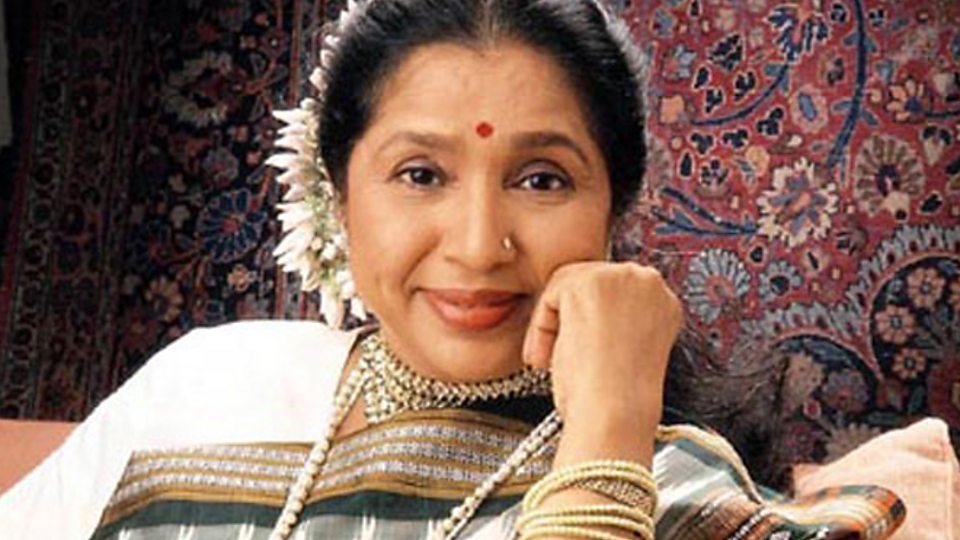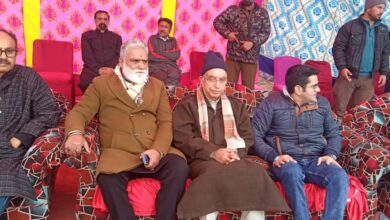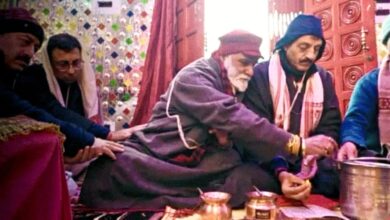Asha Bhosle at 87: Once the perennial ‘Number 2’, the Bollywood legend is second to none today
As Asha Bhosle turns a year “younger,” a look at her legendary musical journey, the famed rivalry with elder sister Lata Mangeshkar, the men in her life (O.P Nayyar and RD Burman) and her love for cooking.
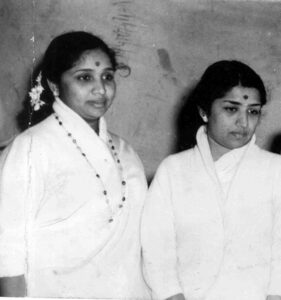 Mumbai,September 8, 2020 : Asha Bhosle is celebrating her 87th birthday today. (Express archive photo)
Mumbai,September 8, 2020 : Asha Bhosle is celebrating her 87th birthday today. (Express archive photo)
‘Bollywood playback doyenne’ might be an apt way to describe her but we aren’t quite sure if Asha Bhosle herself would like to be called that. She’s more like a rockstar, an indefatigably cool figure in the Hindi film industry whose music has both grooved and moved us beyond words. Given her youthful exuberance, it is easy to forget that Bhosle turns 87 today. It’s more likely she turns a year younger. And, really, how amazing it would be to have her age backwards, because that would simply mean many more years of music, food, wisdom, her candour and tangy sense of humour.
The evergreen Bhosle has been singing playback in Hindi films for nearly seven decades, a feat that has earned her an entry into the Guinness Book of World Records for recording over 11,000 songs in 20 different languages. Those are unprecedented numbers by any reckoning, and it’s quite possible no Bollywood singer in the future will be able to top that record. And yet, for most of her life Bhosle had to deal with being the perennial ‘Number 2,’ a not-so-subtle reference for having to remain under the gigantic shadow of the banyan tree called Lata Mangeshkar.
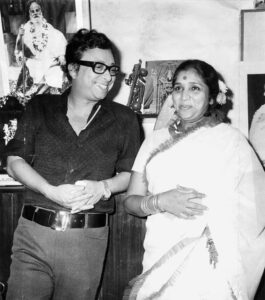 The Mangeshkar sisters’ so-called rivalry is the stuff of legend, a favourite topic of conversation among Hindi music buffs even though Bhosle went on to turn her highly distinctive style into a personal cottage industry as opposed to Lata Mangeshkar’s multinational majesty. According to music pundits, the sibling rivalry can be traced back to their childhood. They were a family of musicians and especially after Lata, the eldest Mangeshkar, decided to enter Bollywood it was a given that Bhosle would follow suit to try her luck in playback. The first few years were tough but the struggle didn’t end there. At the time, Bhosle was married to the much-older Ganpatrao Bhosle who was reportedly her secretary. He would try to peddle her to music directors, personally sitting in for recordings. Lata, obviously protective of Bhosle, was miffed with the younger sister who eloped to get married to Ganpatrao. Bhosle was only 16. This was the first thaw in the sisters’ relationship, the private reality of which has remained off limits to the audience despite their very public life. Except a few niggles from Asha Bhosle in occasional media interviews, the two have kept their grudges largely confined to home. A few years ago, Bhosle, talking about Lata-di in a TV interview, expressed regret that being the elder one she didn’t help her as much as she could have. “But,” Bhosle rationalised, in our family, we don’t have a culture of promoting each other professionally.”
The Mangeshkar sisters’ so-called rivalry is the stuff of legend, a favourite topic of conversation among Hindi music buffs even though Bhosle went on to turn her highly distinctive style into a personal cottage industry as opposed to Lata Mangeshkar’s multinational majesty. According to music pundits, the sibling rivalry can be traced back to their childhood. They were a family of musicians and especially after Lata, the eldest Mangeshkar, decided to enter Bollywood it was a given that Bhosle would follow suit to try her luck in playback. The first few years were tough but the struggle didn’t end there. At the time, Bhosle was married to the much-older Ganpatrao Bhosle who was reportedly her secretary. He would try to peddle her to music directors, personally sitting in for recordings. Lata, obviously protective of Bhosle, was miffed with the younger sister who eloped to get married to Ganpatrao. Bhosle was only 16. This was the first thaw in the sisters’ relationship, the private reality of which has remained off limits to the audience despite their very public life. Except a few niggles from Asha Bhosle in occasional media interviews, the two have kept their grudges largely confined to home. A few years ago, Bhosle, talking about Lata-di in a TV interview, expressed regret that being the elder one she didn’t help her as much as she could have. “But,” Bhosle rationalised, in our family, we don’t have a culture of promoting each other professionally.”
When Bhosle entered Bollywood, Lata was already a hit singer. Also, Shamshad Begum and Geeta Dutt, the two legendary songstresses of the era, had to be contended with. In such a scenario, Bhosle was not simply ‘Number 2’ but possibly, further down at ‘Number 4.’ Bhosle had made up her mind from the beginning not to sing like Lata. She wanted to carve her own niche. Either, she consciously picked songs that were worlds apart from the classic elegance of Lata Mangeshkar or such work came to her because Lata was not given to experimentation. Both scenarios are true. Early comparisons with Lata didn’t deter Bhosle, though it did cast a shadow on her long career. To be Lata Mangeshkar’s sister exacts a psychological toll, too but Bhosle turned rejections into advantage. It was Lata’s Goddess-like dominance that led to the creation of Asha Bhosle in the first place. While Lata sang for the lead heroines, Bhosle was left to fill the gap. She lent her ebullient voice to the Helens of the world, the cabaret girls and vamps. The fact that the sisters are stark opposites is evident even in their public image. Bhosle’s glass-clear personality and her uninhibited sense of humour is a refreshing contrast to Lata’s “stick to the script” dignity.
The first music director to recognise and groom Asha Bhosle’s talent was O.P Nayyar. He gave her a break in 1956’s C.I.D, but she finally came into her own with Nayyar’s 1957 hit Naya Daur, a soundtrack celebrating the composer’s Punjabi voice. Reportedly, when Bhosle first met Nayyar, she was still suffering from an inferiority complex, thanks to Lata “Big Tree” Mangeshkar. According to Bhosle’s “musical biographer” Raju Bharatan, the Nayyar-Bhosle combination produced 324 songs, a staggering number that includes hits like Dekho kasam se, Aaiye meharbaan, Isharo isharo, Jaaiye aap kahan jayenge, Zara haule haule, Yehi woh jagah hai and Aaao huzur tumko, to name just a handful.
Nayyar never worked with Lata but neither did he use Bhosle as a compromise candidate. He believed Bhosle’s voice matched his musical aesthetics and style. “I never ever summoned her (Lata) for any of my songs. I needed a powerful, full throated, sensuous voice and she had this thin, thread-like voice, which was not at all suitable for my music,” Nayyar said in an earlier interview. The Bhosle-Nayyar relationship didn’t escape the roving eye of the media. As that alleged love story met its painful end Bhosle found another musical partnership in RD Burman, this time ending in marriage. A smitten RD Burman – six years younger than her – wooed Bhosle by sending her flowers anonymously.
“Music was the basic foundation of our marriage,” Bhosle once said about her husband, popularly called Pancham. Talking to film critic Khalid Mohamed, she noted, “We could listen to Bismillah Khan, the Beatles, Shirley Bassey.. and so many more for hours and hours. Pancham would emerge from his shower, in a lungi kurta, at 9.30 am and till 3 pm, we’d be humming together to the albums of John Coltrane, Earth Wind and Fire, Sergio Mendes, Santana, the Rolling Stones, Blood Sweat and Tears, Chuck Correa, Osibisa. Our taste for music was eclectic, and that was our everlasting bond.”
Like Nayyar, Pancham gave her both Westernised tunes and classical notes to which Bhosle added her own personal touch. For Pancham, she could easily switch between the rock-infused Aaja aaja (Teesri Manzil) and the cabaret Piya tu ab toh aaja (Caravan) on one hand and the defiant hippie cry of Dum maaro dum (Hare Rama Hare Krishna) and the classical Piya baawari (Khubsoorat) on another. However, she has declared Mera kuch saaman from Gulzar-RD Burman’s Ijaazat as a song that defines her brilliant career, along with Khayyam’s Umrao Jaan, whose dulcet ghazals continue to mesmerise listeners.
Even though Bhosle has been less prolific of late she’s one of the few singers from the golden age who is instantly identifiable, partly due to her connect with the younger music-listeners. She’s also a cook in her spare time and runs a series of restaurants. A few years ago, when asked by BBC to explain the connection between singing and cooking, she said, “If you can sing well then you need to eat well, and if you eat well then you usually enjoy cooking. Cooking comes from the heart – it should be made with love, for others to enjoy, just like singing.”
From music to food, can you think of anyone else who may have led a life as eventful as Asha Bhosle? It’s not clear which unexplored territory the legendary singer will chart next. What is clear, however, is that history will judge this ‘Number 2’ as second to none.


